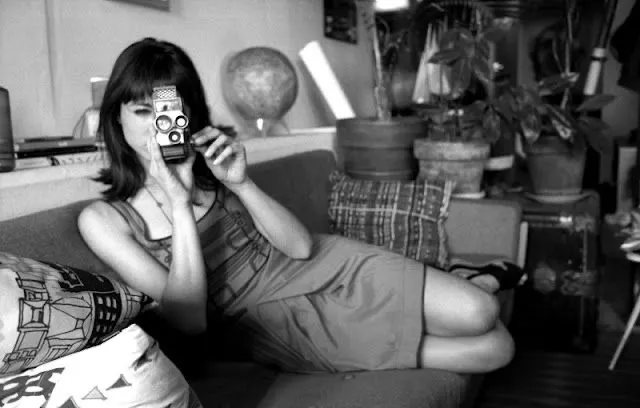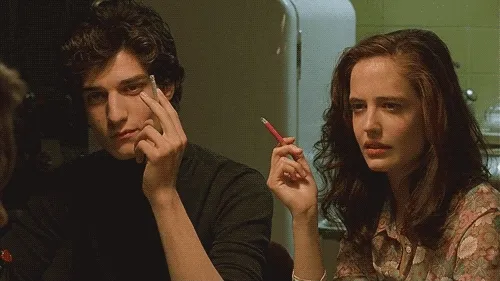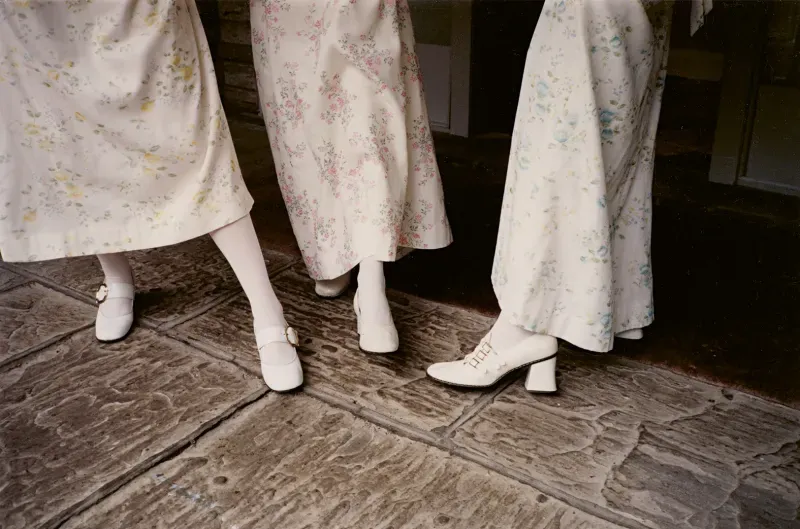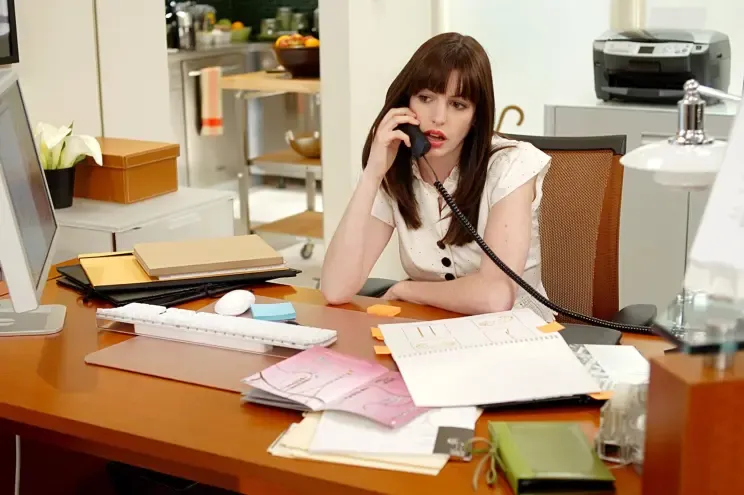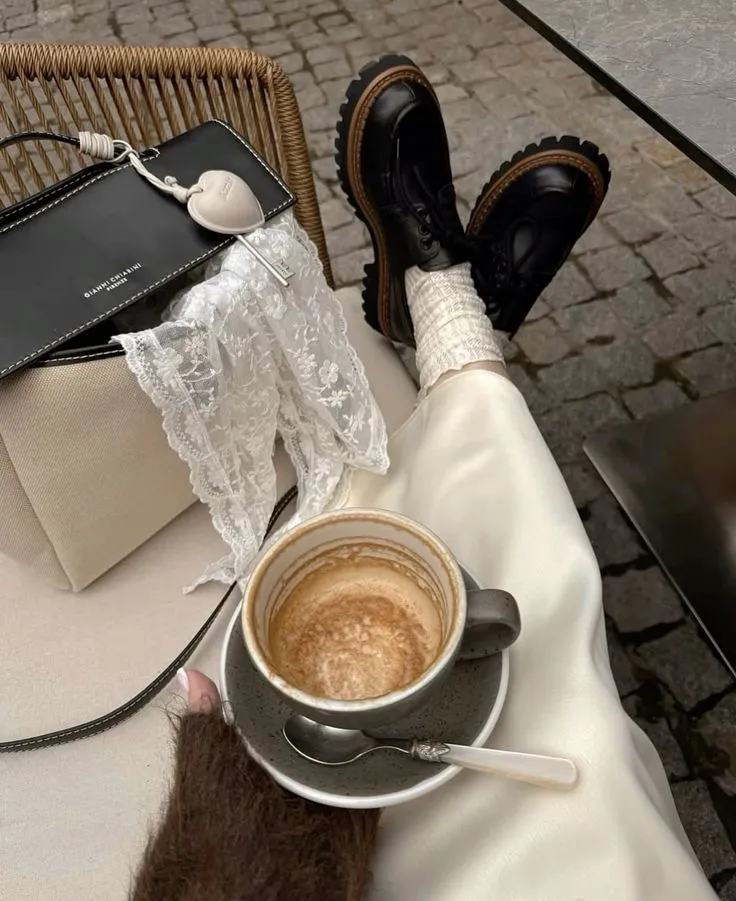why romanticizing your life is an inherently violent act
The act of romanticizing life constitutes a form of cognitive violence. It is the systematic erasure of lived reality in favor of aesthetic pleasure.
Surprise! Pop Quiz
Multiple Choice
When you are taking a photo of an aesthetic street, do you:
A. Carefully frame your shot, then edit out the people and other undesirable objects
B. Photograph without people and get really annoyed when someone walks into your shot
C. Document the reality of your experience through your perspective in that moment that no one photographing that same street can ever replicate?
Short Answer
When looking back at vintage film reels and photographs, are you most fascinated by empty streets and perfectly curated still portraits, or are you inherently drawn to the people: their lives, clothes, expressions, hairstyles, accessories, and the life that surrounds them?
I pick up my pen to record my observations of this exact moment in which I am scribbling these words.
A grand arch with dollops of richly whipped cream.
A web of iron and glass twisted into art nouveau.
9th arrondissement.
Rue Richer.
What am I saying?
Is it real?
Is it imagined?
Is it both?
It is as real as the lukewarm coffee flowing and filling my empty stomach.
It is as imagined as all the books and art I have consumed in my twenty-eight years of life.
Now the true question: Is it romanticization or perspective?
Romanticizing life has become an almost automatic and unintentional conditioning that is slowly seeping into every aspect of existence, no matter how mundane.
Where did the pop culture phrase of “romanticizing life” originate?
It was not on TikTok, Youtube, or even Tumblr.
Romanticism became a very popular movement in the late 18th century as a reaction against Enlightenment rationalism.
They are two different approaches attempting to understand the world we live in.
While the Enlightenment focuses on reason, logic, and science for the collective betterment of society, Romanticism focuses on prioritizing emotion, imagination, and the individual experience.
We have all heard the terms “male gaze”, “female gaze”, the “Romantic gaze” is a way of seeing the world through a filtered lens rather than with the naked eye.
Sadly, the contemporary understanding of romanticizing life is more inherently tied to consumer culture and socially defined aesthetics than to a literary idea.
Given the thesis and title of this article, you may believe you have already guessed my conclusion as to whether romanticizing life is right or wrong.
I challenge any pre-conceived notion you may have of where this is going.
The philosophy behind romanticizing life
The philosophy of Romanticism goes back thousands of years, with theories and concepts written by men and women in completely different societies and eras, but whose views are surprisingly relevant in our modern digital existence.
Classical
Plato: In Plato’s “Republic”, he argues that mimetic art (art which represents reality) distances the viewer from the truth and can be morally corrupting.
In our contemporary context, the literary classic “Lolita” by Vladimir Nabokov has been transformed into a niche internet aesthetic identity. You see TikTok littered with lolita content that romanticizes the lifestyle. This exemplifies Plato’s warning of creating multiple layers of distance from the truth, which is the reality of abuse, and this prioritizes aesthetic pleasure over ethical realities.
A work of mimetic art centered around lolita is Lana Del Rey’s song “Lolita”. This differs from internet content in that, unlike in the book, where Lolita’s voice is suppressed, the song explores the lolita archetype from a young rebellious girl’s point of view.
So is all mimetic art wrong?
Existentialists
Nietzsche: In Nietzsche’s “Birth of Tragedy”, he states that life can only be justified as an aesthetic phenomenon. Art reveals truths about existence that ethics obscures. A perfect example of this is Toni Morrison’s “Beloved”. Beautiful prose containing moral horrors that we feel deeply when reading it.
Beauvoir: In Beauvoir’s “The Second Sex”, she writes about the violence of abstraction, criticizing the romanticization of women in literature and philosophy, stripping them of their humanity. In our modern context, this perfectly describes the cultural trope of the “it girl”. The narrative constructed around what is an “it girl” erases the particularity of her embodied experience. Sofia Coppola’s “The Virgin Suicides”, is an excellent example of the tragedy of being a romanticized girl.
Postmodernist
Debord: In Debord’s “Society of the Spectacle”, he describes the phenomenon of one’s authentic lived experience becoming secondary to its image. aka social media and the rise of the influencer.
Moral Implications
Pinterest can be a wonderland for developing ideas and inspiration, but it must be taken with a grain of salt. I would argue that the ethos of Pinterest’s existence is romanticization. I scroll through Pinterest nearly every day. It knows my taste almost perfectly at this point. However, there is one feature I cannot abide by, and that is the shop feature.
Yes, I get it. It’s convenient to be able to find exact replicas of pins from outfits and furniture you like, but upon minor research, I realized that many of the links in the shop feature lead to scams and fast fashion brands.
At this point, your brain has already decided what it wants, it has the satisfaction of finding it, now it’s solely up to the strength of your morals to decide if you add the $29 long white lace skirt to cart or not.
You know which objects you need to create the aesthetic you want, and instead of finding these objects organically or through reputable and ethical brands, it’s become too easy, as well as the societal norm, to buy cheap quickly, rewarding instant gratification, for an aesthetic that probably hasn’t been developed through your personal taste, but through the taste of others romanticizing their lives in a particular way.
Is it really that deep though?
The Social Cost
What is the social cost of the cult of aesthetic adherence?
Historical: Peasant labor funding royal aesthetics
Modern: Underprivileged communities in developing countries fund internet aesthetics
As they say, history repeats itself, and both roads lead to the same destination of economic collapse from excess (in our context: overconsumerism) and revolutionary violence as a response to aesthetic violence (The French Revolution & the current “eat the rich” cultural slogan).
Are aesthetics evil?
Aesthetics can serve purposes such as propaganda, making moral atrocities attractive. In Susan Sontag’s “Fascinating Fascism”, she writes about the concept of the aesthetic appeals of authoritarian spectacle.
Brutality and oppression are neatly camouflaged under beauty, uniforms, rituals, and spectacle.
A modern example of this is the “corporate girlie” aesthetic. Reframing the corporate world, which is notoriously integrated with capitalism, burnout, and inequality, as a romanticized, aspirational lifestyle complete with office siren outfits, morning routines, and the girlboss spectacle. This aesthetic makes workers complicit in their own exploitation by making it "cute.”
Are you beginning to see a pattern here? Same concepts, new contexts.
Both are artificial worlds governed by aesthetics rather than ethical realities.
Beauty as a Moral Anesthetic
When we romanticize life, the aesthetic presentation becomes more important than the actual experience being presented.
Form sanitizes content
We often see our favorite influencer embodying the aesthetic we love and identify with and romanticizing their life in the most “that is everything” outfit.
We look down at our pilled sweatpants and stained oversized T-shirts, instinctively moving our finger to tap on the affiliate links so our life feels as good as theirs looks. The beautiful photo sanitizes the content of the $95 polyester blend sweater, made in a factory that paid the worker $1.25 per hour… and we don’t give it much thought.
Beautiful presentation makes violence palatable
Aesthetics take topics like mental illness, addiction, abuse, and death, and contort it into consumable content. When creating content, rather than art, around these topics, the viewer is interacting with the beautifully packaged presentation that erases the mess and makes it seem like a desirable lifestyle rather than genuinely interacting with the topics themselves and thinking deeply. The emotion is focused on the presentation instead of the content.
Artistic abstraction distances from consequences
Dark academia, my favorite aesthetic, shows us beautiful details that make us feel like we are experiencing an authentic intellectual life. This artistic lens of academic romanticization often hides the real consequences of choosing this lifestyle. There is intense isolation, obsessive perfection, and psychological cost. Rather than sharing fragments of perfection, one must show both the perfections and imperfections.
The beauty and the horror.
In my opinion, reality (even within an aesthetic) shown through different human perspectives instead of filtered through romance, is much more interesting.
The inherent violence in all of this is that romanticized narratives become more desirable than lived experience.
The most violent act
Perhaps the most violent act when romanticizing your life is erasing your own existence and distorting it into an illusion of memory.
A very interesting psychological facet of romanticization is how:
Algorithm-led romanticism shapes collective memory
Memory then reshapes to conform to your own aesthetic preferences
The consequence is nostalgia for experiences never lived, whilst being aware of the irony of your conscious aesthetic construction.
This is somewhat of a neo-romantic modernism.
Let’s self-diagnose
Romanticizing morning coffee: violent vs. non-violent self diagnosis
Non-violent: noticing warmth, taste, and ritual without obscuring reality
Violent: noticing my aesthetic lifestyle that reflects my sophisticated values and distinguishes me from the mindless consumers
Prognosis: You may be sacrificing your present moments to future social validation.
If:
Your actual thoughts and sensations are replaced by what one is “supposed” to experience according to the romantic narrative.
If you are having to edit your reality to exclude aspects of your experience that don’t fit the narrative (mundanity, mess, exhaustion) from your consciousness.
Instead of being focused on the present moment, you are focused on the image of what you’re experiencing.
You are experiencing the moment through the lens of an imagined future memory or social media post.
You feel yourself becoming a prop rather than a sanctuary of actual experience.
Do your followers secretly hate you?
Romanticization of life can create social pressure for others to experience normal life as transcendent.
Your friends and followers may feel inadequate about their own ordinary mornings
The collective expectation of a “normal” experience becomes skewed
Social media creates the competition and copying of personal moments
Ethical Aesthetics
Romanticization of life can offer real pleasure and genuine insights, but its tendency toward totalization is what makes it inherently violent. The violence lies not in aesthetic appreciation itself, but in romanticism’s systematic overriding of ethics to aesthetics.
Something we all need to research and develop as a rebellion to the digital age romanticism is ethical aesthetics.
its’ NOT: Art and content with explicit moral messages, rather it resists totalizing tendencies and preserves space for complexity and ambiguity.
it IS:
Resisting the urge the possess or control perfect experiences
Finding beauty in the imperfect
Seeing beauty in previously excluded voices
Challenging aesthetics that reinforce social hierarchies (here’s looking at you, “old money”)
Developing aesthetic appreciation that doesn’t depend on exclusion
NOTE: One of my inspirations for this article was “The Secret History” by Donna Tartt. It brilliantly portrays the violence of romanticization and the ethics of aesthetics.
Beauty that doesn’t require exploitation of others
Aesthetic practice as a form of creativity rather than consumption
Cultural context as relevant rather than separate from aesthetic meaning
The true challenges are:
Recognizing when aesthetic serves ethical sensitivity and when it harms it
Understanding how one’s privilege and social position shape both aesthetic and ethical judgement
Acknowledgment that aesthetic engagement doesn’t make one morally superior
Living a daily life that honors and embraces both beauty and responsibility as one
Final Notes
Stay informed. Read books, articles, academic journals. Watch films and youtube videos. Get that second degree, or learn online.
Visit your local library!
Study what piques your interest in a certain aesthetic, and look deeper.
Are we all perfect humans? No. That’s kinda the point.
This isn’t a 1600s puritanical realm where we all must sneer at and cancel those who romanticize. We are all just trying our best.
Stay kind and disgustingly educated.
Further Reading:
Books
The Secret History: Donna Tartt
Beloved: Toni Morrison
Romanticism and Gender: Anne Mellor
Fascinating Fascism: Susan Sontag
The Work of Art in the Age of Mechanical Reproduction: Walter Benjamin
Ethics of Ambiguity: Simone de Beauvoir
The Art of Cruelty: Maggie Nelson
Sister Outsider: Audre Lorde
The Birth of Tragedy: Friedrich Nietzsche
Society of the Spectacle: Guy Debord
Articles
The Cost of Sentimentalizing War: The Newyorker
The Invention of the Male Gaze: The Newyorker
Slow Violence: The Paris Review
Film
The Virgin Suicides: Sofia Coppola
The Dreamers: Bernardo Bertolucci
Portrait of a Lady on Fire: Céline Sciamma
Marie Antoinette: Sofia Coppola


